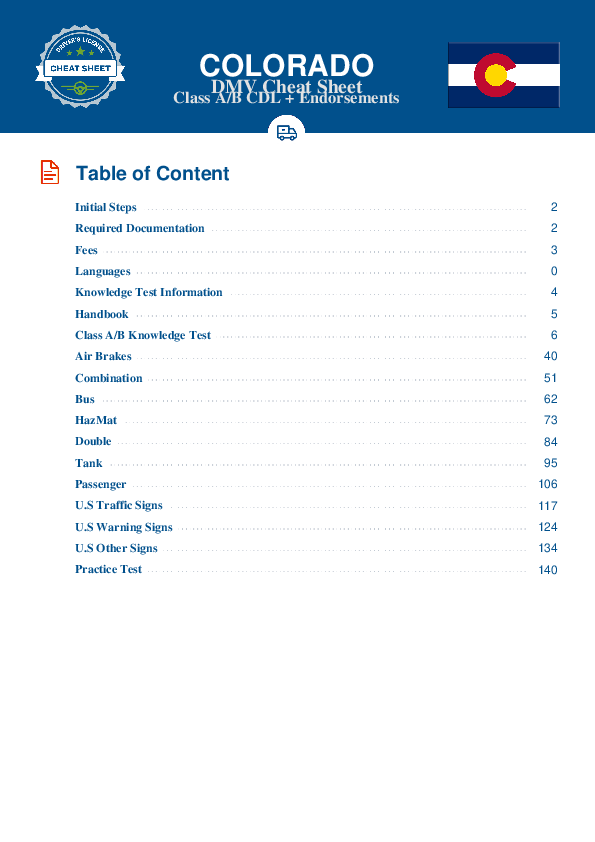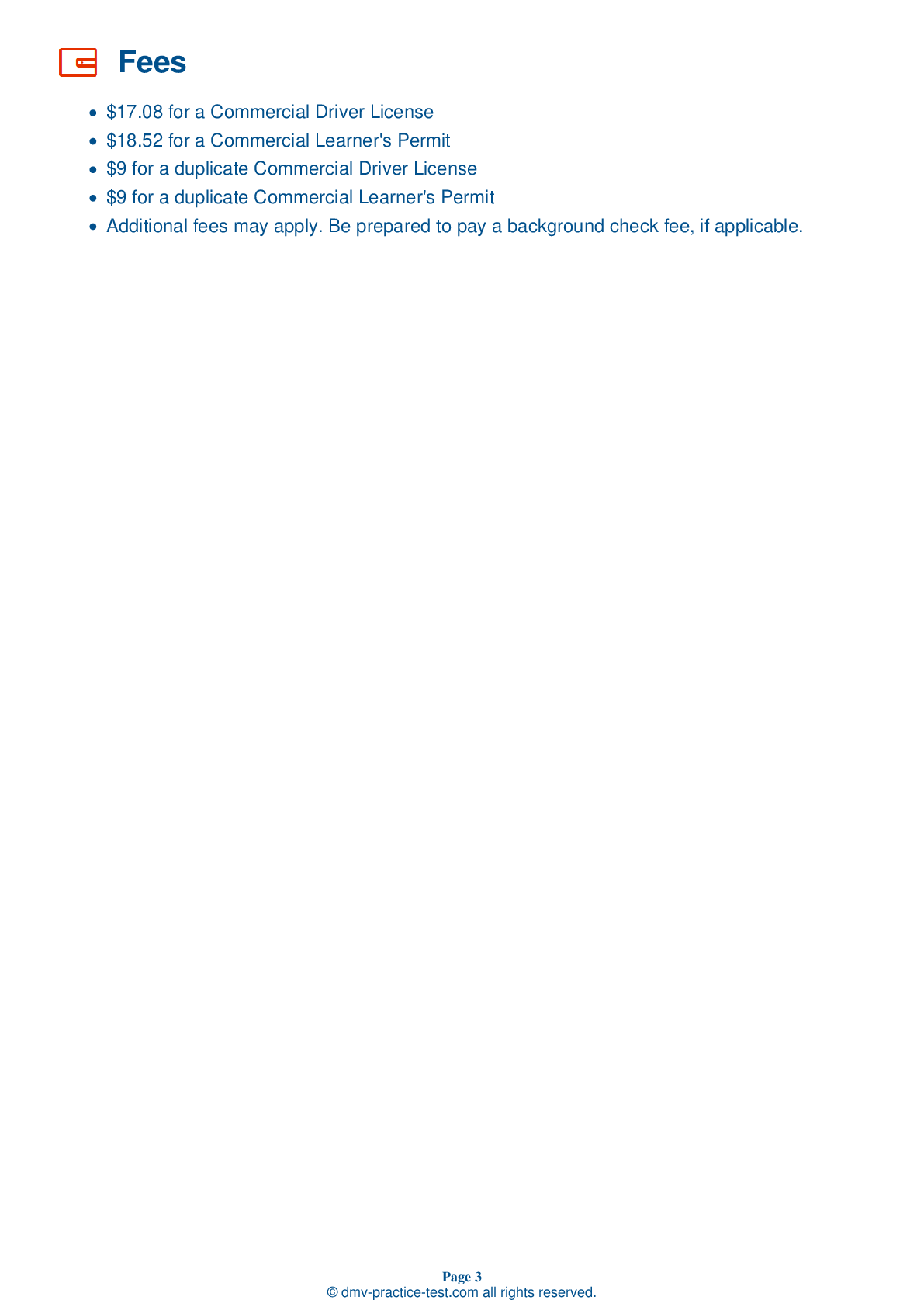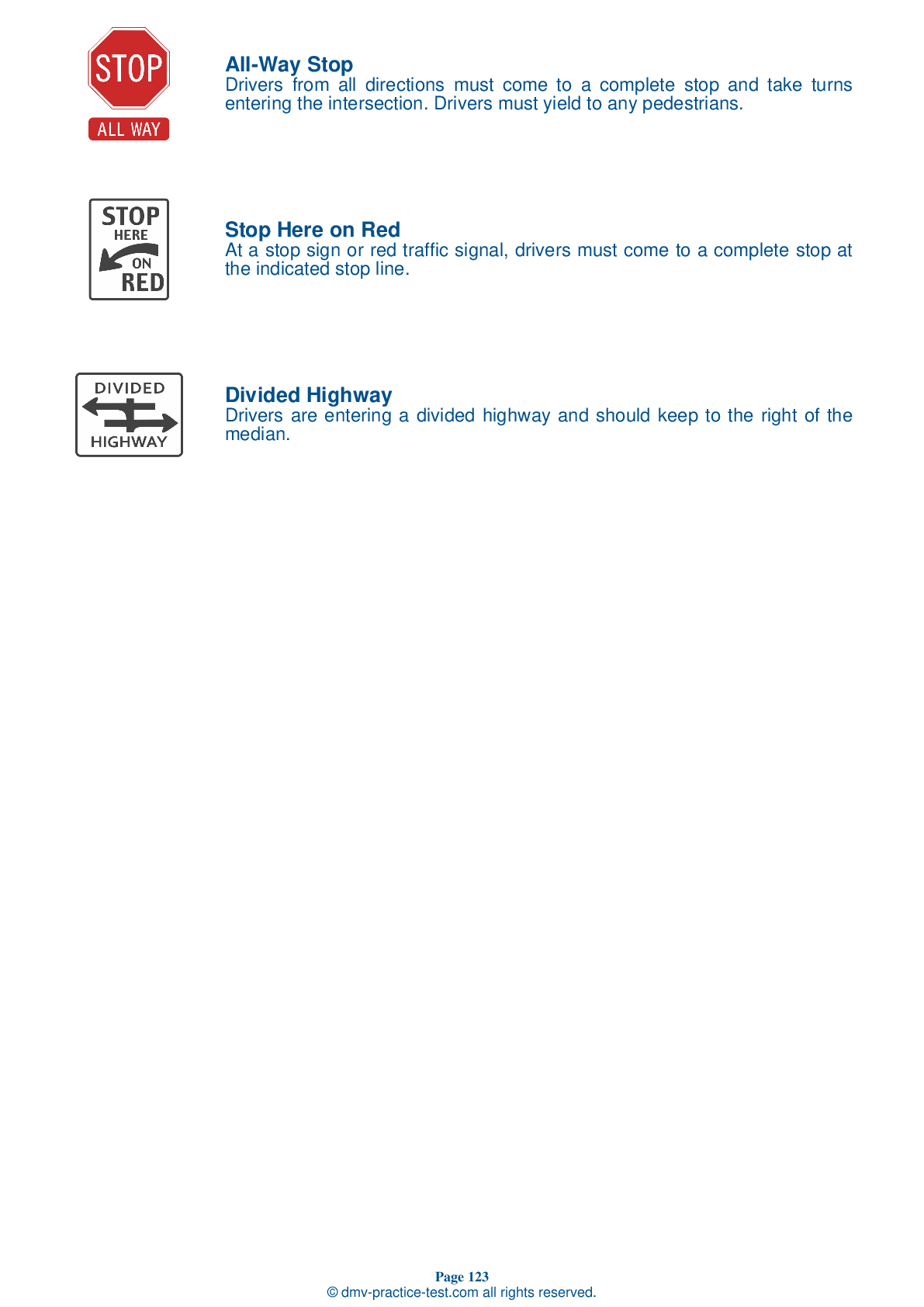Air Brakes #1
Air Brakes Endorsement Test | Colorado 2025 #1 Page 4 of 4
Train for FREE online with our Colorado CDL air brake test. The official exam test consists of several obligatory parts, with all of them checking your knowledge of different blocks of road rules. If you need to obtain a CO Class A/Class B driver license in 2025, practice as much as possible. Free sample tests published on our website will help you check and improve your knowledge and boost your grades. Please bear in mind that the requirements for CDL may vary from state to state.
25
20
20
19 . During an applied leakage test, the maximum leakage rate for a double combination vehicle is:
4 psi in a minute.
It is important to know the maximum air loss rate that is safe for your specific vehicle. A double combination vehicle should have a leakage rate no higher than 4 psi in a minute during an applied leakage test.
20 . What happens if the air pressure in a system's air tanks falls below 60 psi?
The vehicle should stop.
In an air brake system, a low pressure warning signal should activate if the pressure in the air tanks falls to a level below 60 psi. This signal may be in the form of a warning light or a wig wag.
21 . To stop in a vehicle that uses air brakes, the driver should:
Pull the brake pedal up.
To make a normal stop in a vehicle with air brakes, push the brake pedal down. The harder the pedal is pressed, the more air pressure is released.
22 . What does the air compressor governor do?
Controls the temperature of the air leaving the air storage tanks.
In an air brake system, the air compressor governor controls when the air compressor pumps air into the air storage tanks.
23 . During an applied leakage test, the maximum leakage rate for a triple combination vehicle is:
4 psi in a minute.
It is important to know the maximum air loss rate that is safe for your specific vehicle. A triple combination should have a leakage rate no higher than 6 psi in a minute during an applied leakage test.
24 . When the brake pedal is pushed down, air brakes work:
Only if it is warm outside.
Because air takes time to flow through the air lines to the brakes, air brakes cannot begin working instantly. There is often a brake lag of at least one-half of a second between the moment the brake pedal is pressed and the moment the brakes begin to work.
25 . When inspecting your brakes, a slack adjuster should move ____ from where it is attached to the push rod.
No more than one inch
Check each slack adjuster after setting wheel chocks and disengaging the parking brake. Pull the slack adjusters to make sure they do not move more than about one inch from where the push rod is attached. If they move more than one inch, they may be out of adjustment and will need to be fixed.
2025 Colorado | Frequently Asked Questions
A CDL Class A license in Colorado is defined as a commercial driver's license that allows the holder to operate any combination of vehicles with a Gross Combination Weight Rating (GCWR) of 26,001 pounds or more, provided the GVWR of the vehicle(s) being towed is over 10,000 pounds. This typically includes tractor-trailers and truck and trailer combinations.
A Class A CDL license in Colorado allows you to operate vehicles such as tractor-trailers, truck and trailer combinations, tank vehicles, livestock carriers, and flatbeds. These are typically vehicles with a Gross Combination Weight Rating (GCWR) of 26,001 pounds or more where the towed vehicle(s) exceed 10,000 pounds.
To obtain a Class A CDL license in Colorado, applicants must be at least 18 years old (21 for interstate driving), possess a valid driver's license, pass a vision test, and successfully complete knowledge and skills tests. They must also pass a Department of Transportation (DOT) physical examination and provide proof of residency and social security number.
In Colorado, you must be at least 18 years old to qualify for a Class A Commercial Driver's License (CDL) for intrastate driving (within Colorado only). However, to drive a commercial vehicle across state lines (interstate driving), federal regulations require drivers to be at least 21 years old.
Endorsements are not required for a Class A CDL license, but they can provide additional driving privileges. These include H (Hazardous Materials), N (Tank Vehicles), P (Passenger Vehicles), S (School Bus), T (Double/Triple Trailers), and X (Combination of Tank Vehicle and Hazardous Materials). Each endorsement requires additional knowledge tests, and some may require skills tests.
The Class A CDL skills test in Colorado includes three parts: the pre-trip inspection, the basic vehicle control, and the on-road test. You'll need to demonstrate knowledge of your vehicle's components, show you can control your vehicle in various situations, and prove your ability to safely drive in traffic.
Yes, there are limitations. A Class A CDL holder may be restricted from operating certain types of vehicles or transporting certain types of cargo depending on their qualifications, endorsements, and any restrictions listed on their license. Examples include air brake restrictions, manual transmission restrictions, or restrictions related to wearing corrective lenses while driving.
No, according to federal regulations, the written Class A CDL test in Colorado must be taken in English. This is to ensure that all commercial drivers can read and understand traffic signs and signals, directions, and other driving-related documents in English, which is essential for safety on U.S. roads.
Yes, you can request accommodations for the Class A CDL written test if you have a disability. The Colorado DMV is committed to providing equal access to its services. You should contact your local DMV office in advance to discuss your needs and arrange for any necessary accommodations. This might include assistive technology or extra time to complete the test.
If you don't pass the Class A CDL written test in Colorado, you can retake it. However, you must wait until the next day to do so. There's no limit to how many times you can retake the test, but keep in mind, each attempt requires a new fee. It's advisable to study thoroughly before retesting.



